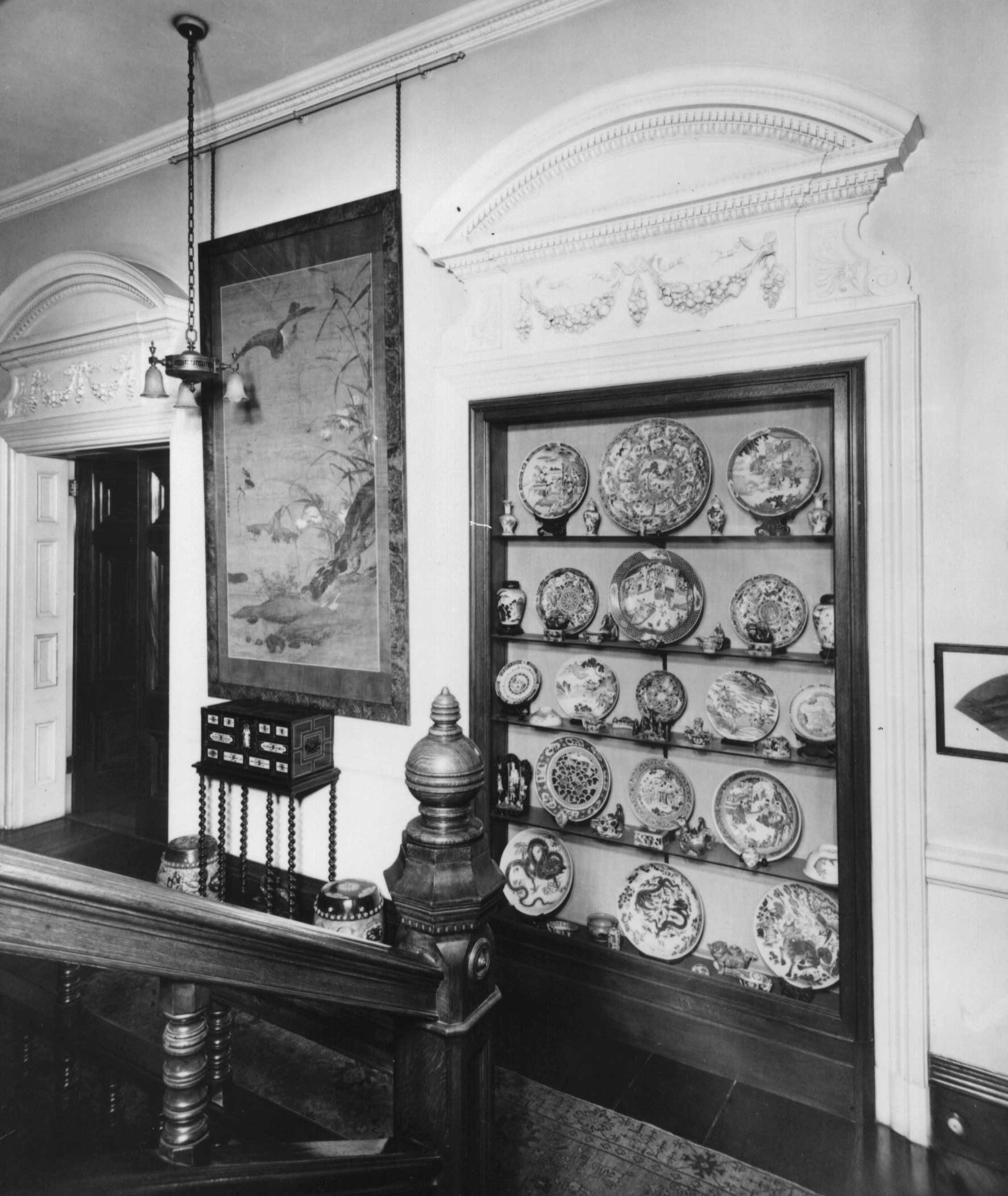George Eumorfopoulos (1863–1939) originated from the Greek island of Chios but was born in Liverpool, England. He grew up in London’s Notting Hill, went to school at London’s Greek College, and joined the Eumorfopoulos family trading business. After a short stay at Odessa, he married Julia Scaramanga (1864–1944) in 1890. In 1902 he joined the merchant firm of Ralli Brothers.

George Eumorfopoulos's house at 7 Chelsea Embankment, London 1934.
He began his collecting activity with European and Japanese porcelain. In 1906 the first specimens of Tang period pottery figures reached Europe and he was the first to recognise their aesthetic merits and collecting potential. This early start as well as his insatiable curiosity allowed him to amass one of the most important private collections of Chinese art ever created, with tens of thousands of pottery and metal objects, paintings and sculptures in stone, marble, wood, and jade.
His familiarity with modern art, which he collected and studied, opened new ways to approach these antiquities. He was a patron of artists like the sculptor Barbara Hepworth (1903–1975) and the potters Bernard Leach (1887–1979), Shoji Hamada (1894–1978), and Charles Vyse (1882–1971). The catalogue of his art collection, including Chinese, Korean but also Islamic items, was published in eleven volumes between 1925 and 1932. Eumorfopoulos also wrote articles on Chinese art himself. He was first and lifelong President of the Oriental Ceramic Society, member of the Burlington Fine Arts Club, fellow of the Society of Antiquaries and the Royal Asiatic Society, and benefactor of the Egypt Exploration Society.
Although he was born in Britain and only visited Greece for the first time in April 1931 for the opening of the Benaki Museum, he did not forget his country of origin. He contacted Greek government officials with the suggestion of donating his entire collection to the nation, to no avail. In 1927, he repeated his proposal on a smaller scale, this time through Antonis Benakis (1873–1954). The enthusiastic acceptance encouraged him to add more items, books, and display cases, custom-made in London. They all ended up in the newly-founded Benaki Museum. The correspondence between Eumorfopoulos and Benakis bears testimony to the faith of the two collectors to a vision of a progressive and ecumenical Greece.
The recession of the early 1930s forced Eumorfopoulos to sell the greater part of his collection to the British state. Further objects were sold in the open art market. However, he was generous towards Greece one more time, donating another 452 ceramics to the Benaki Museum and arranging for the catalogue of his donation to be compiled by Leigh Ashton (1897–1983). He died on 19 December 1939.